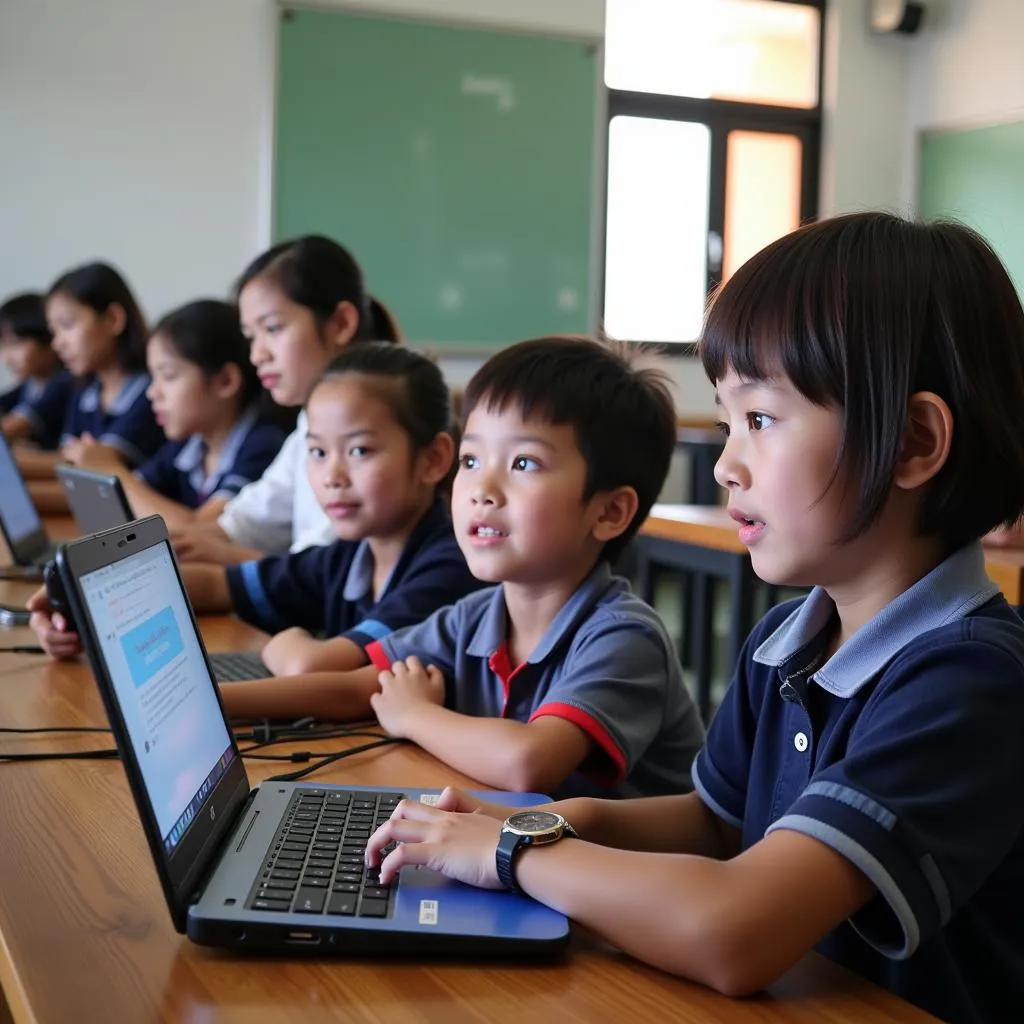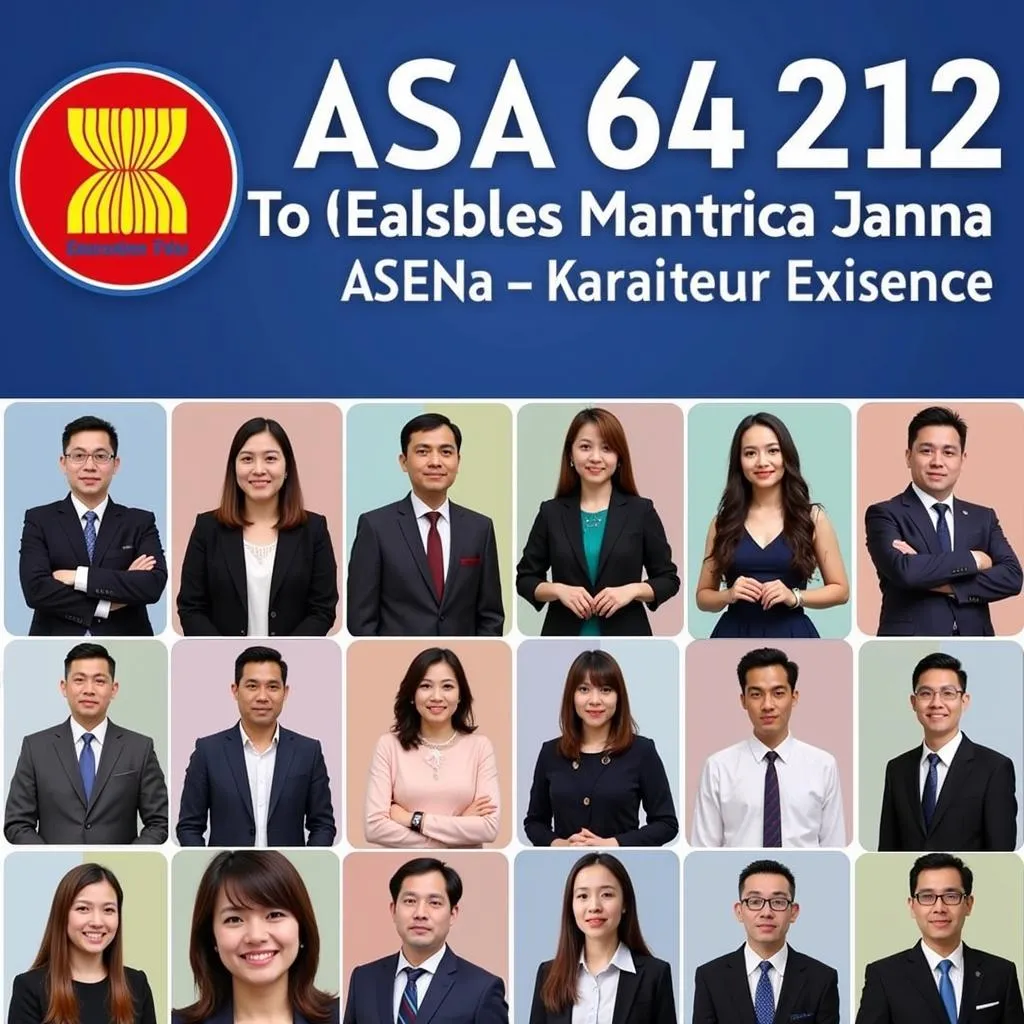ASEAN education is a vibrant and diverse landscape that reflects the region’s rich cultural heritage and economic aspirations. It plays a crucial role in shaping the future of Southeast Asia, empowering individuals and driving societal progress. This article delves into the key aspects of ASEAN education, exploring its unique characteristics, challenges, and opportunities.
The Multifaceted Landscape of ASEAN Education
ASEAN education is characterized by its diverse systems and approaches, reflecting the unique cultural and historical backgrounds of its member states. From the highly centralized education systems in Vietnam and Thailand to the decentralized approach in Indonesia and Malaysia, each country has its own unique strengths and challenges. Despite these differences, a shared commitment to quality education and lifelong learning is evident throughout the region.
Embracing Diversity and Inclusion
ASEAN education embraces diversity, recognizing the importance of inclusivity and accessibility. Education systems across the region strive to cater to the needs of diverse learners, including students with disabilities, indigenous communities, and marginalized groups. This commitment to inclusion is a cornerstone of ASEAN education, fostering a sense of belonging and equity.
Fostering Innovation and Technology Integration
ASEAN education is embracing innovation and technology to enhance learning experiences and prepare students for the future. The region is witnessing a rapid adoption of digital technologies in classrooms, from online learning platforms to virtual reality simulations. This integration of technology is transforming the educational landscape, enabling personalized learning and providing access to global resources.
Key Challenges and Opportunities in ASEAN Education
While ASEAN education boasts significant advancements, certain challenges remain to be addressed. These challenges include:
- Quality and Equity: Ensuring equitable access to quality education for all learners is a persistent challenge. disparities in resource allocation, infrastructure, and teacher training contribute to educational inequalities.
- Skill Gap: The rapid pace of technological advancements and changing labor market demands create a growing skill gap. Education systems need to adapt and equip students with the skills needed for future careers.
- Collaboration and Integration: Enhancing collaboration among ASEAN member states in education is essential for sharing best practices, developing joint initiatives, and promoting regional integration.
These challenges also present opportunities for progress. Collaborative efforts are being undertaken to address these challenges through initiatives such as:
- ASEAN Quality Assurance Framework: This framework aims to enhance the quality of education by establishing common standards and promoting regional collaboration.
- ASEAN Skills Development Framework: This framework focuses on strengthening vocational training and skills development to bridge the skills gap.
- ASEAN Higher Education Network: This network facilitates collaboration among ASEAN universities, promoting exchange programs, research partnerships, and student mobility.
The Future of ASEAN Education: Shaping a Brighter Tomorrow
ASEAN education is poised for continued growth and transformation. The region’s commitment to quality education, innovation, and collaboration will play a vital role in shaping the future of Southeast Asia.
“The future of ASEAN education is about empowering young minds with the knowledge, skills, and values needed to navigate the complexities of the 21st century.”
- Dr. Anika Sharma, Education Specialist, ASEAN Secretariat
By embracing new technologies, promoting inclusivity, and strengthening regional collaboration, ASEAN education is poised to become a catalyst for positive change, fostering a more equitable, prosperous, and sustainable future for the region.
Frequently Asked Questions
Q: What are the major challenges faced by ASEAN education?
A: The major challenges include ensuring equitable access to quality education, addressing the growing skill gap, and enhancing regional collaboration.
Q: How can technology be leveraged to improve ASEAN education?
A: Technology can enhance learning experiences, provide access to global resources, and personalize education.
Q: What role does collaboration play in advancing ASEAN education?
A: Collaboration between ASEAN member states enables sharing best practices, developing joint initiatives, and promoting regional integration.
Q: What are some examples of successful ASEAN education initiatives?
A: Examples include the ASEAN Quality Assurance Framework, the ASEAN Skills Development Framework, and the ASEAN Higher Education Network.
Q: What are the key priorities for the future of ASEAN education?
A: Key priorities include strengthening quality assurance, bridging the skills gap, promoting innovation, and enhancing regional collaboration.
 ASEAN Education Embraces Diversity
ASEAN Education Embraces Diversity
 ASEAN Education Leverages Technology
ASEAN Education Leverages Technology
 ASEAN Education Collaboration
ASEAN Education Collaboration
We hope this article has provided valuable insights into the dynamic landscape of ASEAN education. For any inquiries or further information, please contact us at:
Phone: 0369020373
Email: aseanmediadirectory@gmail.com
Address: Thôn Ngọc Liễn, Hiệp Hòa, Bắc Giang, Việt Nam.

